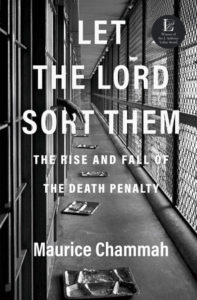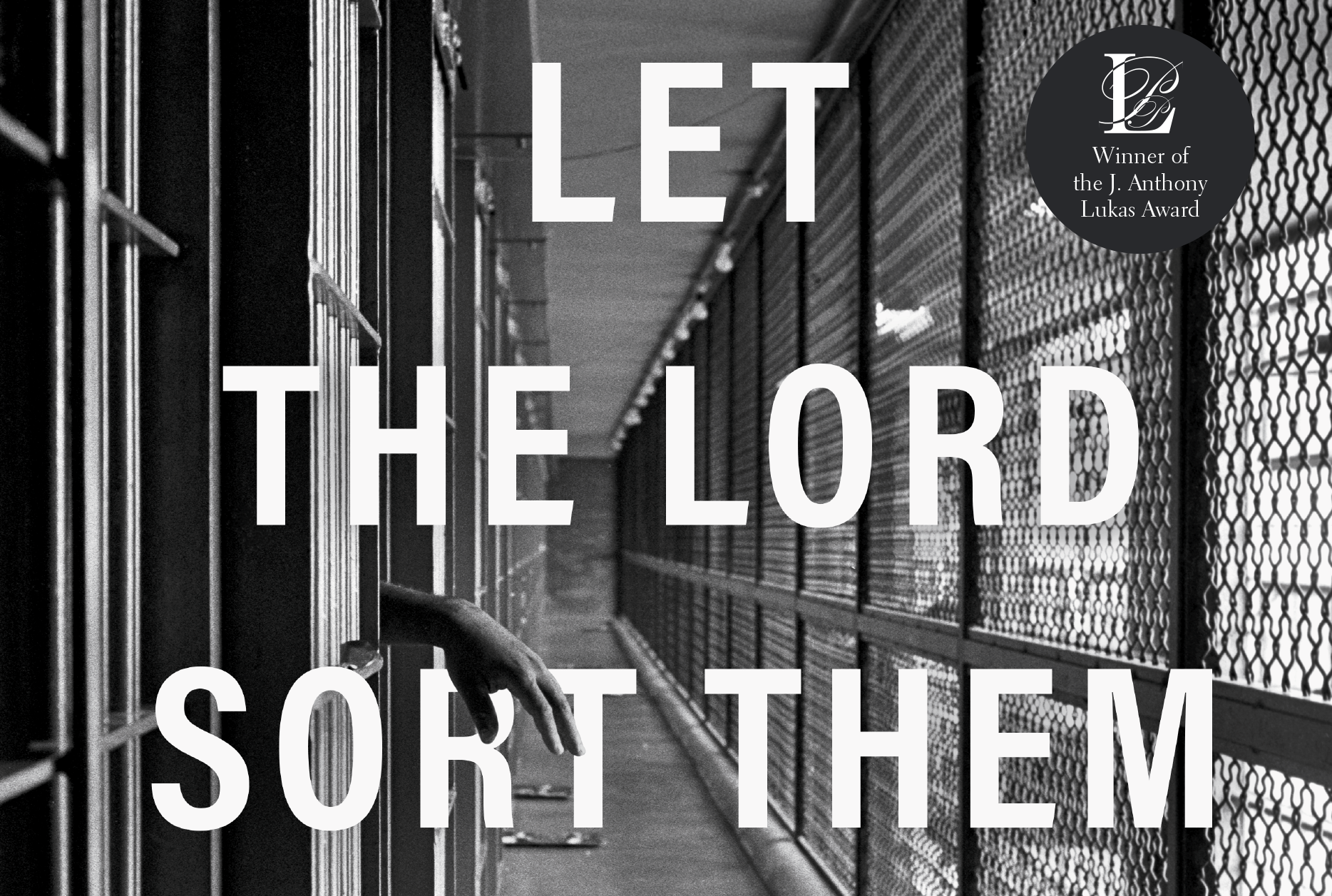In July 2020, the federal government shocked activists and advocate by resurrecting the death penalty. After 17 years without federal executions, it resumed carrying them out with fervor.
Over Trump’s final six months in office, he oversaw executions at an extraordinary pace—more than any president since the 19th century. During the final week of his administration, the federal government executed three people, including Lisa Montgomery, the first woman to be executed by the federal government in nearly 70 years.
Let the Lord Sort Them, a book tracing the rise and fall of the American death penalty over the past 50 years, was published in the following days. Authored by Maurice Chammah, an Austin-based staff writer with the Marshall Project, the book pays special attention to the history of capital punishment in Texas.
Filter spoke to Chammah about the importance of Texas’ role in nationwide capital punishment, moments of humor among those impacted by the death penalty and the future of capital punishment in this country. The interview has been edited for length and clarity.
Lucia Geng: In the first few chapters of your book you outline what makes the death penalty in Texas special. Could you walk through those factors? Why did you focus on Texas?
Maurice Chammah: I focused on Texas for two reasons. One is, just a broad, almost data-based reality that Texas is the epicenter of executions in the United States. There have been more than 1500 since the 1970s and more than a third of those were in Texas.
The second is I grew up here, and knew the cultural elements to that story. I had grown up hearing about a kind of frontier mentality and hearing about Texas as a Western state. Once I lived in other places and got a fuller perspective, I realized that we were also a Southern state, with a history of racial violence that had not been adequately talked about and thought about.
As I got deeper into the research, I saw that there was a very technical, legal and political story about how the Texas law was written in the 1970s that also paved the way for it to be such a center of the death penalty.
In the course of your research, what contradiction about the death penalty was the most interesting to unpack for you?
I actually think that the most interesting contradiction about the American death penalty is a little less true of Texas than it is of other places. It’s the idea that support fot the death penalty is very high, but then when it comes to actually carrying out executions there’s a lot of ambivalence. It would be, frankly, easier—bureaucratically and practically—for states to carry out lots of executions with the firing squad, or with hanging. But there were cultural reasons why we don’t do that, and those cultural reasons have never been fully excavated.
It used to be that executions were carried out before crowds of people, and now we’ve put them in quiet rooms behind tall prison walls. People say they support the death penalty, and in many cases that’s an authentic belief, but when it comes to actually carrying them out, there’s a sort of queasiness about really putting the death penalty in front of the public in the way that we used to. There doesn’t seem to be any cultural appetite for it. That contradiction was something I really wanted to explore.
In the book I talked about this one Texas legislator [then-state Senator Craig Washington] who, in the 1970s, tried to attach an amendment to the death penalty law that would force all of the legislators to personally vote on each execution, and to have the electric chair on the floor of the Texas State Capitol building. All the other legislators uncomfortably reacted to this idea, but what he wanted them—and all of us—to understand with that suggestion is that there’s a refusal to take ownership of this punishment. In states like Nevada, California and Pennsylvania, there are very large death rows. There’s no hesitation to send people to death, but then there is a huge hesitation to actually execute them.

The death penalty is traumatic, but in the book you mention “little moments of levity” on death row. There are a lot of wonderful anecdotes. What were moments that made you hopeful?
I wanted the book to capture the gravity of the subject, but not the impossibility, because it’s just so heavy. We as humans contain a lot. We contain the capacity for incredible sadness and also levity in the sadness, and I think I was constantly looking for moments where people on death row joked with each other or found some levity in their days.
There was also a kind of gallows humor that emerged among lawyers who worked on death penalty cases, especially defense lawyers. They worked in this bubble where it felt like the whole [country] hated them for defending the worst of the worst, but they would rib each other and they just developed this very warm culture. I found that really invigorating to read about. Even in the darkest moments for them professionally, they were capable of joy. They didn’t let the difficulty of the work completely destroy them.
When that Texas legislator said, “let’s have the electric chair on the floor of the Capitol,” there were other legislators who said, “let’s have an amendment to carry out executions in a rodeo arena and we’ll charge tickets and we’ll use the money to fund schools.” These moments are horrifying, but then you realize they’re not being serious and they’re just trying to goad their fellow legislators into admitting the contradictions of their views. The way they go about that is so creative. The creativity of that resistance was very inspiring to me.
I focused on lawyers, and I say in a kind of almost snarky tone, because they do most of the talking. They’re the ones who are convincing juries and the public that a particular person on the one hand is evil, or on the other hand, that they are capable of mercy and redemption. I could totally see an alternate version of the book, where the person you follow for a lot of the book is the mother of someone on death row — I sometimes regret that I didn’t spend more time [on family members]. There’s a bit in the book about the family members of people on death row, but could have devoted the entire book to those people. Their emotional experiences are so complex and their grief and their trauma is so under-studied and under-reported.
For all of the spectacle around the death penalty, it directly impacts relatively few people each year. What would you say to someone who asks, “Why should I care about the death penalty?”
I think the death penalty matters a lot for two reasons. One is that it’s the pinnacle of the larger turn that our country took towards harsh sentencing. When you have the death penalty—just on the books, whether or not you carry it out—it makes a life without parole sentence seem more lenient. This played out repeatedly in state legislatures, where life without parole was passed as a less-harsh alternative to the death penalty as another option for juries and prosecutors. To understand the larger punitive turn in our culture and politics over the last 40 years, the death penalty is the heart of that.
The other reason I think the death penalty matters a lot is that because it’s the harshest punishment, and because the stakes feel so high, it attracts really good lawyers. It also attracts a sense among the legal system that nobody should be executed without having a lawyer, so we always have lawyers working on these cases. And the importance of having lawyers work on these cases is that problems are unearthed, and those problems don’t just apply to death penalty cases.
It was through death penalty cases that we started to learn about problematic forensics, and the ways in which crime labs and experts were allowing non-scientific types of evidence into the courtroom. It was through the death penalty that we started to understand more about brain science and the way that brain injuries and trauma and mental illness shape people’s paths in life. And I think a lot of the lessons that have come out of the very limited world of the death penalty have [implications] for the larger criminal justice system as we try to unpack why crime happens, what produces it and how a society can have both less crime and a more mercy-oriented approach to crime when it does happen.
There was a lot of activism and uproar around the executions of Brandon Bernard and Lisa Montgomery especially. How do you feel the level of discourse about the death penalty today compares to the past?
The idea that we all understood that Lisa Montgomery was guilty of the things she was accused of, but also that her execution was also problematic because of her trauma and mental illness—defense lawyers may have been making those arguments in the ’90s, but they were not gaining traction in the public sphere in the same way at all. I think Trump’s run of executions has ironically shown just how much the country has turned against the punishment and turned against the kinds of sensibilities around it that marked a generation or two generations ago.
One lesson I think of 1972 and Furman v. Georgia is that we’ve been here before. We, as a country, abandoned the death penalty before. When the Supreme Court ruled against the death penalty while it was all around the country, there was a tremendous amount of backlash. When change happens at an elite level, whether it’s the Supreme Court, or Congress, without a lot of grassroots support among Americans, people can feel very betrayed and angry at their leaders in Washington.
I think that the death penalty is still on the decline. For America to really embrace the death penalty again would take a lot of cultural and political changes that are very hard to predict and, at least for me, very hard to see. But it’s the nature of history that it’s incredibly unpredictable. One lesson of the past is that these changes don’t really stick unless we take a step back, and assess how we got here, and make a more thoughtful collective decision to make the future different.
Photograph of book cover courtesy of Maurice Chammah





Show Comments